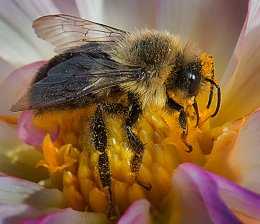"Nige Danton" <***@nospam.com> wrote in message news:1774374209441418833.263615nige.danton-***@news.eternal-september.org...
: Coincidentally, it's partially freed itself now. It's still very stiff and
: is slow to return, but at least it's sort-of working. I've rarely used it
: in the past but I've recently bought a set of extension tubes to try macro
: photography.
:
: Switching topics to macro: it's much (much) harder to focus on the subject
: than I'd anticipated. My set up is an 18-105 lens (the only lens I have),
: tripod, aperture priority (smallest f-stop to maximise the depth of
field),
: and outdoors. I'm just experimenting with flowers right now and am using
: all three extension tubes. One of the difficulties is getting enough light
: on the subject. All that said, it's good fun.
:
: --
: Nige Danton - Replace the obvious with g.m.a.i.l
:
Hello again Nige.
That's good news on the switch and it is what I hoped would happen. The jam
will hopefully not happen again.
Macrophotography is good fun but has its challenges as you are finding out.
May I suggest a couple of things?
1) Using the smallest aperture makes sense for depth of field but lenses
usually perform best when stopped down only 2-3 stops from fully open. For
example, when I use aperture priority with my 15-85mm f3.5-5.6 lens I'll
probably use f6.3-8.
2) You may find it easier to take photos if you use only one extension
tube despite the resulting image not being as large.
More tubes = dimmer viewfinder.
Try using all three tubes then try using one tube. Load the images onto your
computer and compare the images after zooming so they are the same size and
see what differences you can see.
I used this technique when deciding whether to buy a 150-500mm lens or keep
my 70-300mm lens. When I used these lenses at the long end (500mm and 300mm
respectively) and zoomed into the images so they were the same size I found
that the images from the 70-300mm were sharper and had better contrast than
those from the 150-500mm lens. The tests saved me from buying the bulky and
heavy 150-500mm lens.
I have a 60mm macro lens (approx 96mm on my APS-C DSLR) which I use for
macro work in my garden (flowers and insects). I don't take it on holiday so
use my 15-85mm for macro work and the results are not at all bad. The 60mm
lens is a luxury and one I would not have bought at new price. I bought it
second-hand from a dealer I can trust (LCE in Nottingham and Derby).
Have fun.
Best wishes, Ian.
--- news://freenews.netfront.net/ - complaints: ***@netfront.net ---
